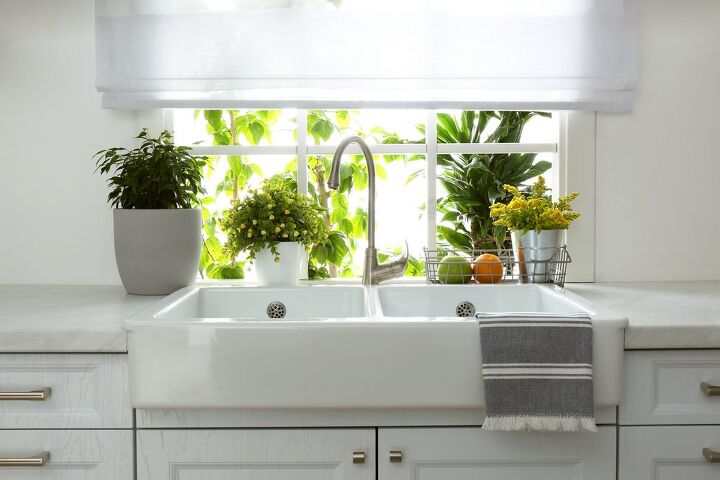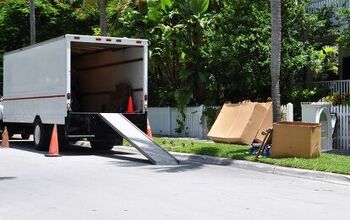How To Plumb A Double Kitchen Sink With A Disposal And Dishwasher

If you’ve just purchased a new dishwasher and you’d like to connect it to a garbage disposal for effective drainage, you’ve come to the right place. Both garbage disposals and dishwashers are generally attached to a kitchen sink for water to drain appropriately once the washing cycle is complete.
One of the major challenges that homeowners face comes with installing these two essential appliances, especially when a double sink is involved. However, with a garbage disposal attached to your double sink, the unit already comes with a connection for the dishwasher drain line. This makes the process of plumbing a double kitchen sink with a dishwasher and garbage disposal relatively simple.
Do You Need to Hire a Plumber?
Get free, zero-commitment quotes from pro contractors near you.

How to Plumb a Double Kitchen Sink With a Disposal And Dishwasher
If your double sink plumbing system already has a garbage disposal, it is a simple process to connect a dishwasher drain as there is already an outlet designed into the disposal specifically for dishwashers. Follow these steps to successfully plumb a double kitchen sink with a disposal and dishwasher:
- Before you proceed, completely shut off your water supply.
- Using your dishwasher drain pipe, run it up and loop it around in a high loop. It is vital the loop is as high as possible to keep water from the dishwasher or sink from running back down into the dishwasher.
- Use a clamp or bracket to secure the top end of the high loop to either the underside of your counter or against the back wall in the corner between the counter and the wall.
- Once fastened, attach the end of the drainpipe to the disposal inlet.
- Clamp the pipe to the disposal inlet using a compression nut and washer, or a hose clamp. These fasteners will be found in the installation kit that comes with your dishwasher.
- With everything properly connected and secured, turn your water supply back on and run your dishwasher to check for leaks. If any leaks are discovered, tighten the application compression nuts.
That’s all there is to it! Though, if your double sink plumbing system does not have a garbage disposal, the process is much more involved.
Importance of a High Loop
When you’re connecting your dishwasher drain pipe to your garbage disposal, it is crucial that you loop the drainpipe as high as possible. Implementing a high loop will help break pressure and prevent water from flowing back into your dishwasher. If the loop is not high enough, it could result in moisture build-up, mold, and dirty dishes being rinsed and washed with the same water.
These are all consequences that can be detrimental to your health and the health of your family. To avoid these issues, always make sure that your loop is high, unhindered, and unkinked.
How to Plumb a Double Kitchen Sink With Dishwasher and No Disposal
A newly installed dishwasher needs both a water supply and somewhere to drain. If you don’t have a garbage disposal, in order for the dishwasher to drain properly, you need to connect the drain line to your double sink drain. Rather than changing the entire drain system underneath your sink, you can install a drain fitting that is designed for this purpose.
- Turn off the water supply to avoid any mess or someone turning on the faucet while you’re in the middle of the project.
- With a double sink, you’ll want to choose the drain that is closest to your dishwasher installation to connect it.
- Underneath your sink, locate the slip nut that connects the sink drain’s tailpiece to the strainer basket. Use pump pliers to loosen the slip nut and let it slide down the tailpiece.
- Free the tailpiece from the drain basket and locate the second slip nut at the base of the tailpiece. Loosen this nut using pump pliers.
- Lift the original tailpiece from the drain line that connects the two sink drains. Dispose of the slip nut that connected the tailpiece to the drain basket and leave the nut connected to the base of the tailpiece connected to the drain.
- Using a measuring tape, determine the length of the original sink drain tailpiece.
- Then, use the following measurement to cut a PVC dishwasher wye tailpiece to size. Make your cuts with a. hacksaw and sand the edges using a 320-grit wet/dry piece of sandpaper.
- Detach the slip joint washer from the slip nut you left in place. Then, insert a new rubber slip joint washer in its place.
- Install the cut end of the PVC dishwasher wye tailpiece into the drain line slip nut. Secure with pump pliers.
- Attach the top of the dishwasher wye to the base of the drain basket.
- The wye will also come with a new slip nut and washer connected to the top. Slide the slip nut and washer up the wye and turn it clockwise to secure it to the drain basket. Tighten the nut further using pump pliers.
- Insert a drain hose clamp onto the dishwasher drain line. Then, slide the drain line over the small pipe that sticks out from the dishwasher wye tailpiece that you previously installed in the double sink.
- To fasten the dishwasher drain line to the sink drain, tighten the screw on the hose clamp.
- Turn on the water supply and verify proper drainage.
Air Gap or No Air Gap?
Before you proceed with begin connecting a dishwasher drain without a garbage disposal, you need to know whether or not the installation requires an air gap. In some areas of the world, plumbing regulations specify that an air gap must be installed on either a countertop or sink if you’re running a dishwasher. The dishwasher drain will first connect to this air gap and then to your sink drain.
An air gap, in plumbing trade, refers to the unobstructed vertical space between the flood level of a fixture and the water outlet. Its primary purpose is to provide back-flow prevented for an installed dishwasher.
Although double sink dishwasher installs with an air gap may not look as appealing, they may be required by law. If your plumbing code does not require an air gap, you can simply use a high loop, which was described earlier on.
Do You Need to Hire a Plumber?
Get free, zero-commitment quotes from pro contractors near you.

Related Questions
What side of a double sink should a garbage disposal be on?
In most cases, the location of the garbage disposal should be related to the workflow in the kitchen. Since it is primarily used to dispose of food scraps, the ideal location is adjacent to the food prep area. When it comes to dishwashing and clean up, you also may want the dishwasher in the sink that won’t be frequently full of water.Alternatively, it is usually more convenient to install the disposal on the same side as the dishwasher. For instance, if your double sink has bowls of differing sizes, consider installing the garbage disposal in the smaller one and placing this sink closest to the dishwasher. Reserve the larger sink bowl for washing dishes.
What’s the best way to use a double sink?
The best way to use a double bowl sink is to use one side for food prep and the other for washing dishes. Or, you can use one side for soaking/washing and the other for storing dirty dishes in the interim. If the bowls are different sizes, use the larger sink for washing and the smaller for food prep and stashing dirty dishes.
Why is water leaking from the bottom of my garbage disposal?
Garbage disposals are linked to your sink with a flange and/or plumber’s putty. Over time, this seal can corrode, loosen, or break entirely. If you have leaking water coming from the bottom of your garbage disposal, as opposed to higher up and dripping down, this is most likely caused by a busted seal inside. To fix this issue, your best bet is to install a new garbage disposal.Although you could take the garbage disposal apart and repair the internal seal, this will usually be much more work than it’s worth. On the other hand, leaking come from the side of the disposal usually has to do with loose connections that need to be tightened or resealed.

Jessica considers herself a home improvement and design enthusiast. She grew up surrounded by constant home improvement projects and owes most of what she knows to helping her dad renovate her childhood home. Being a Los Angeles resident, Jessica spends a lot of her time looking for her next DIY project and sharing her love for home design.
More by Jessica Stone


























![10 Most Dangerous Neighborhoods in Baltimore [Updated]](https://cdn-fastly.upgradedhome.com/media/2023/07/31/9075655/10-most-dangerous-neighborhoods-in-baltimore-updated.jpg?size=350x220)
